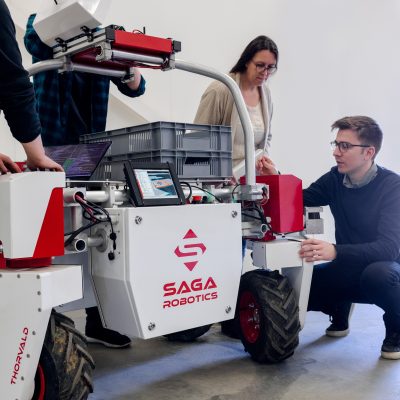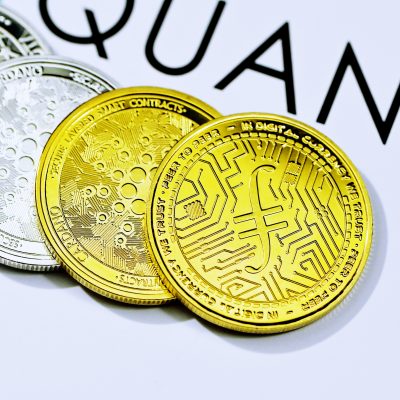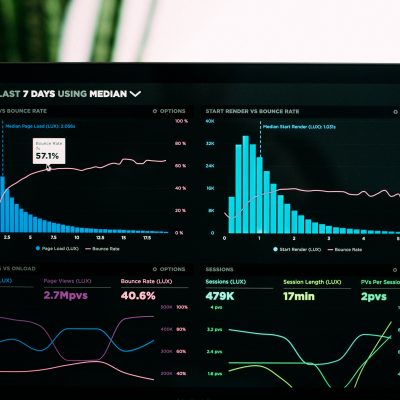Welcome to the fascinating world of 3D printing, where imagination meets innovation and possibilities are limited only by our creativity! In recent years, this groundbreaking technology has revolutionized the manufacturing and prototyping industry, offering a whole new realm of opportunities for designers, engineers, and inventors alike. Whether you’re a tech enthusiast or simply curious about what all the buzz is about, join us as we dive into the role of 3D printing in shaping our future. From its intriguing history to its exciting applications and potential drawbacks, we’ll explore it all! So buckle up and get ready to embark on an exhilarating journey through the mesmerizing world of 3D printing!
The History of 3D Printing
The history of 3D printing traces back to the early 1980s when a visionary named Chuck Hull invented the first-ever 3D printer. This groundbreaking technology, known as stereolithography, involved using ultraviolet light to solidify layers of liquid resin and create three-dimensional objects. It was a game-changer in the field of manufacturing and prototyping.
Over the years, advancements in 3D printing technology continued to push boundaries. New techniques like selective laser sintering (SLS) and fused deposition modeling (FDM) emerged, offering different approaches to bringing digital designs into physical reality.
As the technology became more accessible and affordable, its applications expanded beyond industrial use. Hobbyists began experimenting with desktop 3D printers, creating everything from intricate jewelry pieces to customized home decor items.
In recent times, we’ve witnessed truly awe-inspiring achievements in 3D printing. Medical professionals are utilizing this technology for personalized implants and prosthetics that perfectly fit patients’ unique needs. Architects are pushing limits by constructing entire buildings using large-scale 3D printers.
With each passing year, new possibilities emerge as researchers continue to explore innovative materials such as biocompatible resins or metal alloys suitable for aerospace components.
The history of 3D printing is still being written today as we uncover even more ways this transformative technology can shape our future. The journey has been nothing short of extraordinary so far – and who knows what remarkable breakthroughs lie ahead?
The Different Types of 3D Printers
The world of 3D printing is vast and ever-evolving, with a wide array of printers to choose from. Each type has its own unique set of capabilities and applications. Let’s explore some of the different types of 3D printers that are currently available.
One popular type is the Fused Deposition Modeling (FDM) printer. This printer works by melting plastic filament and layering it onto a build platform to create an object. It’s one of the most affordable options on the market, making it accessible to both professionals and hobbyists alike.
Another commonly used type is Stereolithography (SLA), which uses a liquid resin that hardens when exposed to ultraviolet light. SLA printers produce highly detailed prints with smooth surfaces, making them ideal for creating intricate prototypes or models.
Selective Laser Sintering (SLS) printers use a high-powered laser to selectively fuse powdered material together, layer by layer. These printers can work with various materials like nylon or metal powders, allowing for greater flexibility in manufacturing end-use parts.
Digital Light Processing (DLP) printers function similarly to SLA but use an array of micromirrors instead of a laser to cure the resin. DLP offers faster print speeds compared to SLA while maintaining high levels of detail.
PolyJet technology utilizes multiple inkjet-style printheads that deposit droplets of photopolymer onto a build tray. This allows for precise control over color and material properties within a single print job, resulting in vibrant multi-material prints.
These are just a few examples among many other types such as Binder Jetting, Material Jetting, Electron Beam Melting (EBM), etc., each offering unique advantages depending on specific needs or requirements.
As technology continues to advance at lightning speed, we can expect even more innovative 3D printing technologies and machines in the future! Stay tuned for further developments as this exciting industry continues to revolutionize manufacturing and prototyping.
How 3D Printing is Used in Manufacturing and Prototyping
3D printing has revolutionized the manufacturing and prototyping industries, offering a range of benefits that traditional methods simply cannot match. One of the key advantages is the ability to create complex designs with intricate details that would be impossible or extremely difficult using other techniques. This opens up new possibilities for product innovation and customization.
In manufacturing, 3D printing allows for rapid production of prototypes, reducing time and cost compared to traditional methods. It enables designers and engineers to quickly iterate on their ideas, making adjustments as needed without having to wait for lengthy production cycles. This not only speeds up development but also helps in catching design flaws early on.
Furthermore, 3D printing offers greater flexibility when it comes to materials. From plastics and metals to ceramics and even food-grade ingredients, a wide variety of materials can be used in additive manufacturing processes. This versatility provides manufacturers with more options for creating end-use products or functional prototypes.
Another advantage lies in the reduction of waste during production. Traditional subtractive manufacturing methods often result in significant material wastage due to cutting or machining processes. In contrast, 3D printing builds objects layer by layer, minimizing scrap material.
Moreover, 3D printing also plays a crucial role in streamlining supply chains through on-demand production capabilities. By reducing inventory requirements and allowing for localized manufacturing hubs closer to consumers, companies can save costs associated with shipping and warehousing while responding quickly to market demands.
Despite these numerous benefits, there are still some limitations with 3D printing technology that need consideration. The speed at which objects can be printed is one such limitation – it may take hours or even days depending on size and complexity compared to traditional mass-production techniques capable of producing thousands of units per hour.
Additionally, while many advancements have been made regarding material properties suitable for different applications within additive manufacturing processes; there are still limitations concerning strength properties when compared against conventionally manufactured parts made from materials like steel or aluminum alloys.
However, as technology continues to advance and further research is conducted, these limitations
The Pros and Cons of 3D Printing
When it comes to 3D printing, there are certainly numerous advantages that come along with this innovative technology. First and foremost, one major benefit is the ability to create complex designs and intricate details that would be impossible or extremely difficult to achieve using traditional manufacturing methods. This opens up a world of possibilities for designers and engineers who want to push the boundaries of what can be created.
Another advantage of 3D printing is its cost-effectiveness, especially when it comes to producing small quantities or customized products. Traditional manufacturing often requires expensive molds or tooling, whereas with 3D printing, you can simply upload a digital file and start printing right away. This not only saves time but also reduces production costs significantly.
Furthermore, 3D printing allows for greater design flexibility since it enables rapid prototyping. It becomes much easier to make adjustments and improvements during the development stage before committing to mass production. This greatly reduces the risk of costly errors or having large amounts of inventory that may go unsold.
However, like any technology, there are also downsides associated with 3D printing. One notable disadvantage is the limited range of materials available for use in current printers. While there have been advancements in recent years expanding material options such as metals and ceramics, compared to traditional manufacturing processes, the selection is still somewhat limited.
Additionally, another challenge faced by users of 3D printers is their relatively slow speed compared to other manufacturing methods. Depending on factors such as complexity and size, it can take hours or even days to complete a single print job.
In conclusion…
The Future of 3D Printing
As we look ahead, the future of 3D printing holds tremendous promise. This revolutionary technology is constantly evolving and expanding its capabilities. Here are some exciting possibilities for the future of 3D printing:
1. Advancements in Materials: Currently, 3D printers can work with a range of materials such as plastics, metals, ceramics, and even food products. However, researchers are continuously experimenting with new materials that can be used in additive manufacturing. Imagine being able to print objects using biodegradable or sustainable materials!
2. Mass Production: While 3D printing has traditionally been associated with small-scale production and prototyping, there is ongoing research to enable large-scale mass production using this technology. If successful, it could revolutionize industries by allowing for customized products on demand at a fraction of the cost.
3. Medical Breakthroughs: The medical field stands to benefit greatly from advancements in 3D printing technology. Already, doctors have used it to create patient-specific implants, prosthetics, and even organs! In the future, we may see more complex procedures like organ transplants becoming commonplace thanks to this incredible innovation.
4. Aerospace Innovation: Aerospace companies have already embraced 3D printing for rapid prototyping and creating lightweight components that enhance fuel efficiency while maintaining structural integrity. With further advancements in materials science and printer capabilities specifically catered towards aerospace needs, we may witness groundbreaking innovations in aircraft design.
5. Consumer Applications: As consumer-grade 3D printers become more accessible and affordable over time (similar to how traditional inkjet printers evolved), individuals will be able to unleash their creativity right at home! Customized household items or personalized gifts may become the norm rather than an exception.
In conclusion,
the role of
– Oops! Sorry about that typo! Let’s try again without “In conclusion.”
To summarize,
the role of





